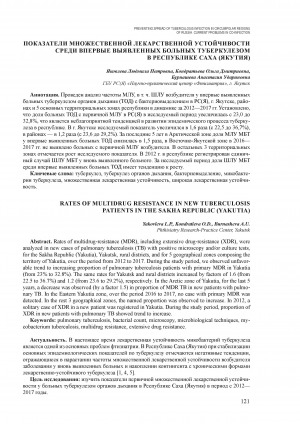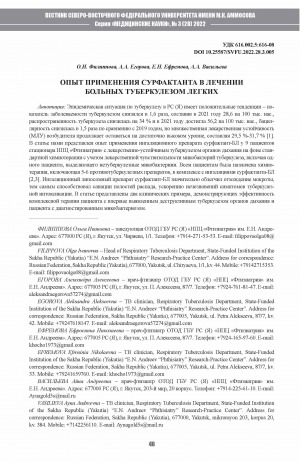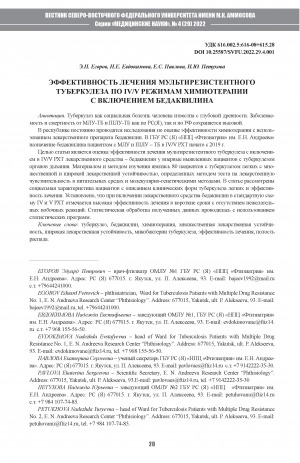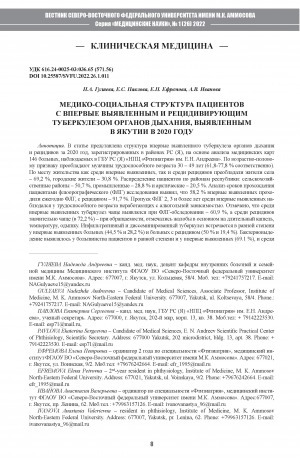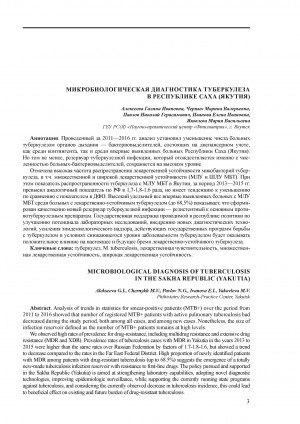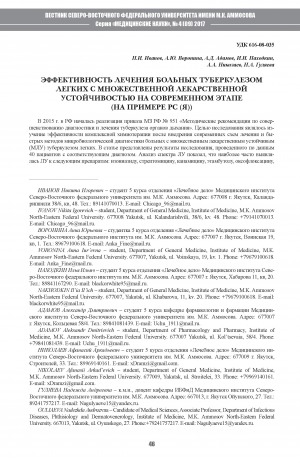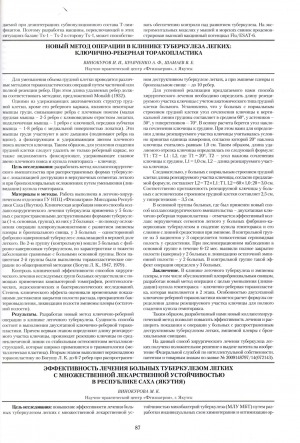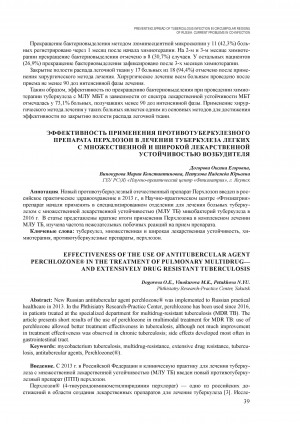За 2011-2016 годы в Усть-Алданском районе Якутии отмечается рост доли больных с МЛУ среди контингентов бациллярных больных ТОД. Среди впервые выявленных больных доля МЛУ увеличилась1,2 раза - с 27,3 до 33,3%, хотя остается ниже республиканского показателя (34,6%). Также необходимо учитывать, что большинство (68,4%)больных туберкулезом с МЛУ имеют устойчивость к 3-5 и более ПТП. Эффективный исход химиотерапии по IV РХТ у больных, зарегистрированных на лечение в 2011-2014 гг., составил 64,0%, неэффективный - 4,0%. Отмечаются высокие проценты прерывания курса лечения, смертности от туберкулеза (по 12,0%) и доля выбывших в систему УИН (8,0%), что обусловлено социальной дезадаптированностью большинства(65,8%) больные туберкулезом с МЛУ и связанными с этим неприверженностью к лечению и отрывами от диспансерного наблюдения. Эффективный исход лечения у больных туберкулезом с МЛУ во многом зависит от скоординированной работы всех заинтересованных ведомств, в первую очередь, от поддержки глав администраций и общественности муниципальных районов, наслегов, населенных пунктов с целью привлечения таких больных к госпитализации и целенаправленному длительному лечению
Over the period from 2011 to 2016, an increase in proportion of multidrug-resistant cases among pulmonary tuberculosis patients with positive microscopy and/or culture (MTB+) has been observed in Ust-Aldansky district of the Sakha Republic (Yakutia). Proportion of multidrug-resistant (MDR) cases among newly identified patients increased by a factor of 1.2 (from 27.3% to 33.3%), but remained below the all-republic level (34.6%). It should be bared in mind, that in most (68.4%) patients with MDR, resistance is, as a rule, to 3-5 or more antitubercular agents. Effective outcomes in patients, who were started on chemotherapy regimen IV during the period from 2011 to 2014, were observed in 64%, while 4% had treatment failure. We observed high rates of treatment interruptions (12%), mortality from tuberculosis (12%), and proportions of cases transferred out to Directorate of Penitentiary Service (8%), which was attributed to the majority of patients with MDR belonging to socially marginalized population groups (65.8%) often associated with treatment non-compliance and defaulting from regular medical check-ups. Successful treatment outcome in patients with MDR largely depends on well-orchestrated work of all relevant agencies, and primarily, must be supported by heads of local administrations and active members of communities in each of the districts, ‘naslegs', or settlements. All these efforts should be aimed at making sure to hospitalize these categories of patients for motivated long-term treatment


